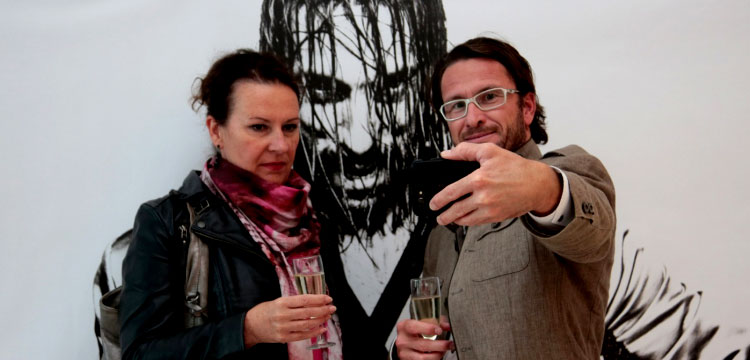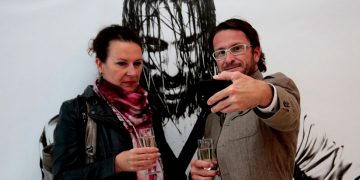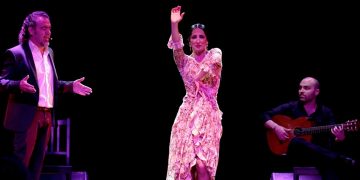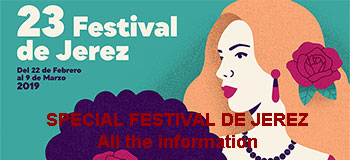The audience response at the Festival Flamenco Kulturpark Traun surprises the authorities and opens up the possibility that flamenco may find a place in Austria.
Silvia Cruz Lapeña
The Festival Flamenco Kulturpark took place in Traun, but with one foot in Linz, a city to which Claudio Magris attributed “a serious continental melancholy”. Perhaps due to that feeling of heaviness, a little lighthearted fun goes down so well in the form of flamenco upon the wounds. Because neither Traun nor Linz have any more relation to flamenco that the memory of some audience members who recalled having attended one of the concerts offered by Paco de Lucía in the 1970s, and a culturally active Spanish community that is small but growing.
Traun captured attention with workshops, courses and shows such as that of Mercedes Ruiz and her “Baile de Palabra”, and Eduardo Guerrero’s “Desplante”, while Linz offered the parallel activities: book presentations, part of Fidel Menese’s exhibition and small-scale performances. The latter were held at the DH5, a cultural venue located in the center of Linz that attracted the youngest audience of the festival. Perhaps that might be a goal for the organization in future editions: to lower the average age of the spectator, not to elevate youth as such, but to guarantee that this first successful edition may be repeated in the future. Initiatives such as the price are a good route to follow: 66 euros covered access to all the activities and performances of the week.
As it all came out well, it seemed easy, but the director of the event, Susanne Zellinger, admitted her concern about presenting flamenco in an area she herself describes as “a flamenco desert”. In actual fact, such good things took place throughout the week, you’re left with the impression that if the authorities are so inclined, there’ll be a festival in Traun for many years to come.
Possibilities
One of those fortunate happenings involved José María Gallardo del Rey and Miguel Ángel Cortés who, with their dual concert, managed to fill the Johann Strauss hall of Traun, and people who had never seen a Holy Week procession cried their hearts out listening to the guitarists’ version of Amarguras, the processional march composed by Manuel Font de Anta.
At each point, it appeared the Austrian audience was enthusiastic. They wanted to know more, to hear more and to dance more flamenco. The beginners’ workshops were an example: many people signed up, especially women, to learn sevillanas, the first step for anyone who has neither knowledge, nor the age to consider a career in flamenco dance. Guitar classes given by local guitarist Bruno Chmel were also full.
Thus, the amateur part was covered, but what blows the mind of any professional singer, guitarist or dancer is seeing the installations of Kulturpark. In addition to being just twenty minutes from Linz by streetcar, there’s also a music school nearby, a castle with all the rooms equipped for dance and music classes, in addition to two stages of different dimensions designed to accommodate all types of shows. Which is why one can’t help wondering how long it’ll be before they open one of these venues for flamenco creation.
The music, quite standard
For anyone coming from Spain, it’s surprising how authorities, the general public and even children deal with culture in Austria: with respect and with questions, a sure sign that something is of interest to them. In this part of the world, a Mediterranean person might get the impression that even the shows are a little more boring, when in actual fact they are more standard. Nothing is extraordinary for the locals in attending a concert of artists unknown to them before yesterday; they don’t let political issues overload the dancer they’re watching, and they don’t take pictures or record videos during the performance because music is a part of daily life.
They don’t make a big deal about art, but the attention given is surprising for people who come from a country where Culture ministers are appointed according to the impression caused. It’s true that just one week ago Traun and Linz were a flamenco wasteland, but the general public has shown there’s room to grow in this land. Mayor Rudolf Scharinger nearly committed publicly and live, encouraged by the successful attendance and the audience reaction he saw in the hour and a half of “Desplante”, a show with which Eduardo Guerrero multiplied the number of flamenco fans and left the desert less deserted.
Photos www.traunimbild.at
Discover more from Revista DeFlamenco.com
Subscribe to get the latest posts sent to your email.


























